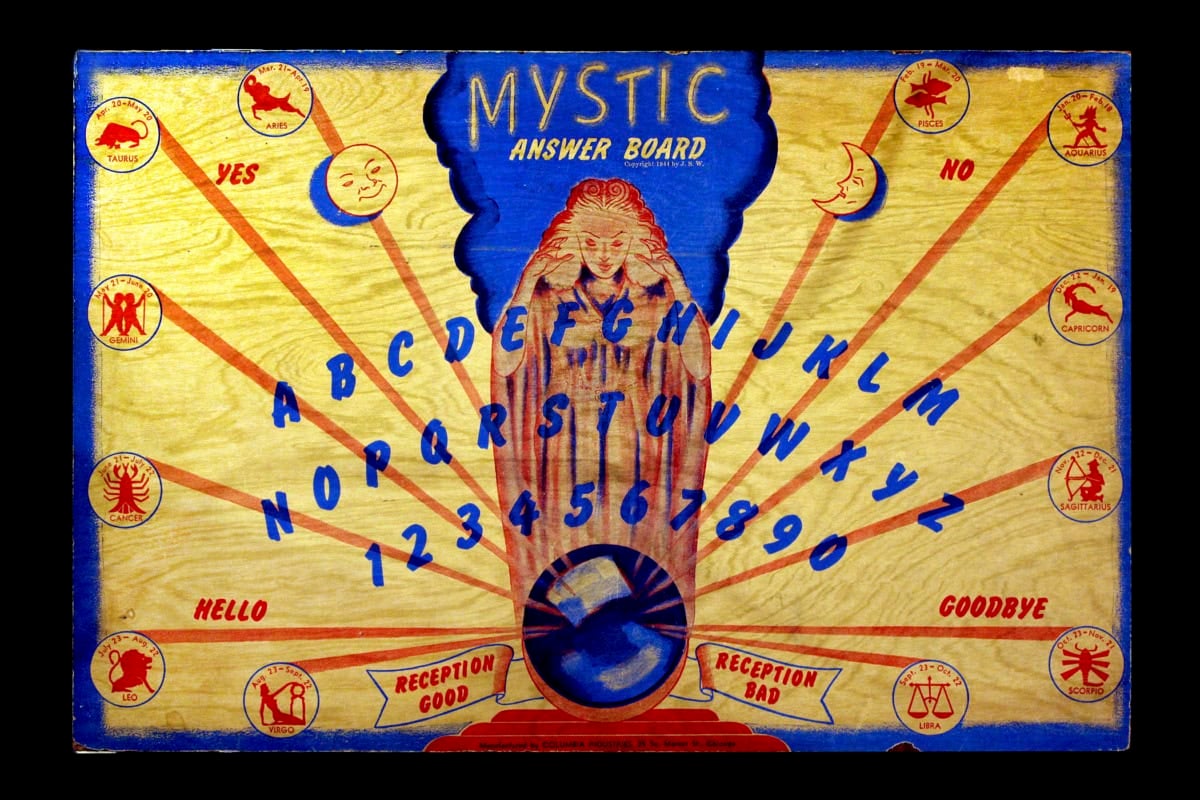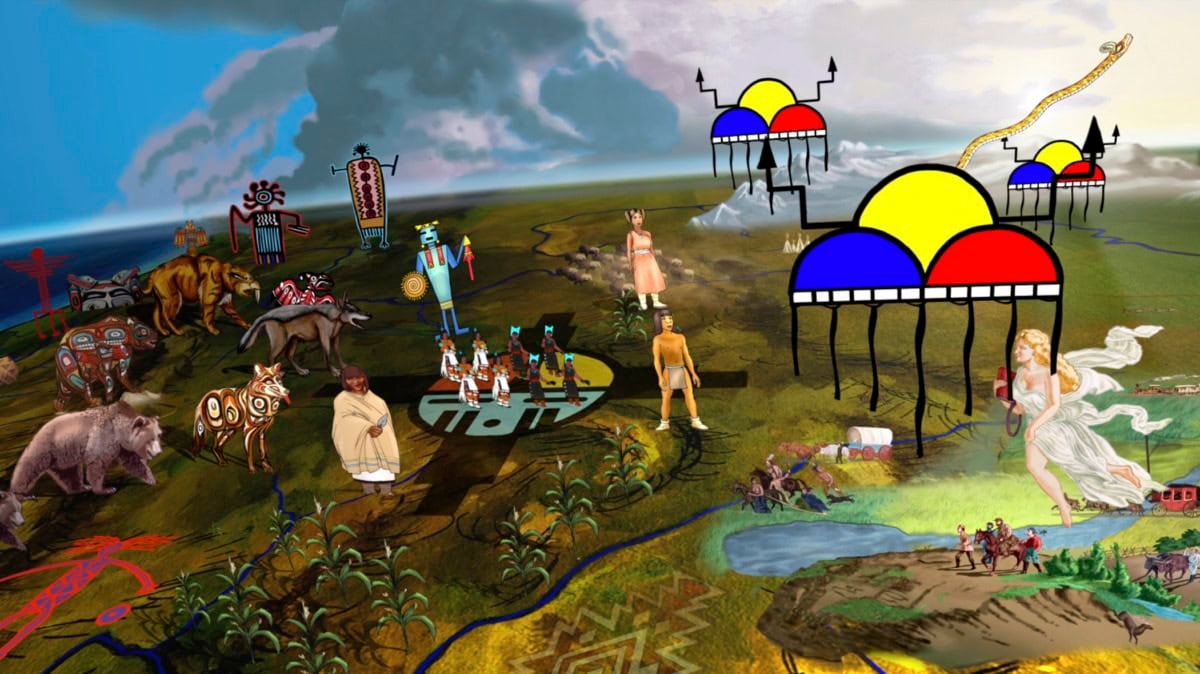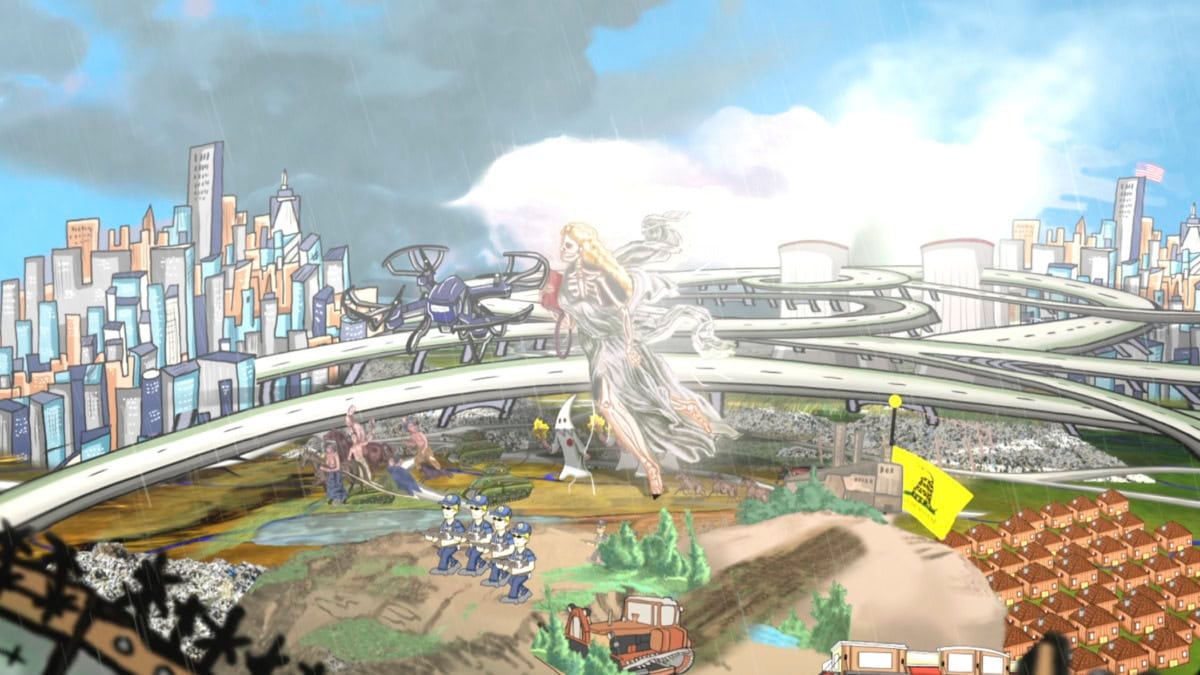
When the truth can be so unbearable, we tend to believe the unbelievable. Stories of spirits, the macabre, and other-worldly beings make up the toolkit of ways we distract ourselves from an unbelievable reality. American history has no shortage of these truths: Chattel slavery, the Civil War, genocide of Indigenous peoples, Jim Crow, and centuries of violence haunt America. Supernatural America at the Speed Art Museum puts these truths and the way we cope with them into context, combining artwork and material culture to show the ways we make sense of the unbelievable within the American experience.
A structure of rusted steel erupts from the floor as one turns the first corner into the gallery. Thornton Dial’s Monument to the Minds of the Little Negro Steelworkers constructs a thicket of metal, wood, animal bones, glass bottles, and artificial flowers. Honoring the metalworkers of Bessemer, Alabama – a town known for its metalworking where Dial worked himself – Dial invokes the memory of the many unacknowledged Black workers who contributed to the infrastructure of a rapidly industrializing nation.
Within view of Dial’s monument is work by another artist with ties to Bessemer: Jack Whitten. Head I and Form (3rd Set) I represent Whitten’s “ghost paintings,” made through a special process of applying, then removing, paint. It wasn’t until after the fact, according to the exhibition’s curator Robert Cozzolino, that Whitten made a connection to the haunting feeling of these pieces. With their fuzzy and ethereal qualities, the paintings reminded Whitten of the legend of Henry Wells. In 1878, Wells, a Black freedman, was arrested for arson. While Wells was inside the Pickens County Courthouse in Carrollton, Alabama, a white lynch mob formed outside. A bolt of lightning struck the window Wells was looking out of, and his face remained etched into the glass. Wells was later lynched, and his legacy affects the town still.¹
Other traumas are processed through painting, like Edwin W. Dickinson’s Woodland Scene. While the inspiration and subject matter for this piece is unknown, we know that Dickinson was often haunted by the deaths of close friends and family – a feeling felt by many in the years that followed World War I (and certainly now, as well). At least three figures appear in this painting: A reclining woman, detached from her surroundings, a shrouded woman, her gray face peeking out from a black hood, and, most haunting, a face wrapped in white, one eye exposed, peeking out behind a small fire. The impact of war on the psyche can be seen in other pieces, like Emanuel Gottlieb Leutze’s Angel on the Battlefield and James Henry Beard’s The Night Before the Battle.
Many artists throughout the massive time period covered in this survey tackle themes of death and mourning on a more personal scale. Precipitated Portrait of Lizzie, Mary, and Christina Daugherty with Dr. Daugherty represents a unique Spiritualist mourning practice in which mediums (Mary Bangs and Elizabeth Snow Bangs, in this case) contact the spirit of the deceased, allowing the spirits themselves to produce the portrait. More well-known are spectral photographs popular among the Victorians, represented by William H. Mumler’s mid-19th-century albumen prints depicting a sitter joined by a ghostly figure. It is within this context that Fernando Orellana’s His Minerals – In his one bedroom house he left behind his collection of minerals and the last batch of incense that he crafted looms. Orellana’s machine neatly displays a collection of brightly colored minerals in their own bottles next to a bundle of incense. A match is held precariously close to its igniting material, waiting to be triggered by a change in the electromagnetic field, suggesting the presence of a ghost.

John Jota Leaños, Destinies Manifest, 2017. Commissioned by the Denver Art Museum. Courtesy of the Artist, John Jota Leaños. Photos: Blue Rain Gallery, Santa Fe, NM. © John Jota Leaños. 
John Jota Leaños, Destinies Manifest, 2017. Commissioned by the Denver Art Museum. Courtesy of the Artist, John Jota Leaños. Photos: Blue Rain Gallery, Santa Fe, NM. © John Jota Leaños.
Supernatural America shows us how history can shape a nation’s system of beliefs, and the toxicity of mythologizing to conceal an uncomfortable truth. John Jota Leaños’ Destinies Manifest references John Gast’s 1872 oil painting, American Progress, in which a blonde angel dressed in white symbolizes the progress that white European settlers believed they were bringing westward. In Leaños’ animation, however, the angel becomes an omen of death and destruction, contributing to the destruction of Indigenous cultures in its wake. By practicing what Leaños calls “historical amnesia,”² –white Americans have used myth to obfuscate the truth so that they no longer are aware of it. It is with this piece that the complexity of the American mythos is exposed, reminding us that some truths shouldn’t be shrouded in legend.
- 1Robert Cozzolino, “Introduction: America is Haunted,” in Supernatural America: The Paranormal in American Art, ed. Robert Cozzolino (Chicago and London: The University of Chicago Press, 2021), 9-22.
- 2John Jota Leaños, “Destinies Manifest,” in Supernatural America: The Paranormal in American Art, ed. Robert Cozzolino (Chicago and London: The University of Chicago Press, 2021), 25-26.




